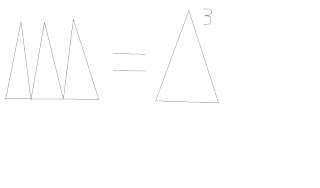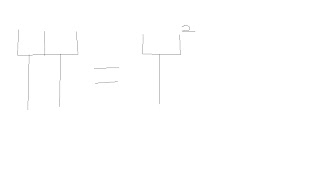The thirty-fourth and last part of my Hangul + Math equation. Cubing Ieung makes Ieungssangieung. Ssang- is a prefix that means "twin" or "double" in Korean.
Do NOT use this Weblog for evil purposes! It is very rude, because this Weblog needs to be protected against the REAL public enemy, not who YOU, the media audience, think is the public enemy! Using this Weblog for socially illegal purposes (such as murder and pornography) is subject to the time in prison indicated by the crime! So I suggest YOU, the actual public enemy (exclusively either a criminal or a bully), need to STAY OUT!
music player
Tuesday, August 13, 2013
Gabyeounbieupssanggabyeounbieup Equals Gabyeounbieup Cubed
The thirty-second part of my Hangul + Math equation. Cubing Gabyeounbieup makes Gabyeounbieupssanggabyeounbieup.
Ssanggabyeounbieup Equals Gabyeounbieup Squared
The twenty-fourth part of my Hangul + Math equation. Squaring Gabyeounbieup makes Ssanggabyeounbieup.
Ssanggiyeok Equals Giyeok Squared
The eighteenth part of my Hangul + Math equation. If you square Giyeok, then it becomes Ssanggiyeok.
Gabyeounbieup Equals Bieup With Long Bottom Line
The seventeenth part of my Hangul + Math equation. If you put the middle line of Bieup turned below the Bieup bottom line, then it becomes Gabyeounbieup.
Bansiot Equals Siot Minus Bansiot
The fifteenth part of my Hangul + Math equation. Siot is between two Bansiots. Bansiot means "half Siot" in Korean. It looks like a triangle.
Bieup Equals Mieum Plus Giyeok
The twelfth part of my Hangul + Math equation. This picture is because if you add Mieum with Giyeok, you get Bieup.
Rieul Equals Digeut Plus Giyeok
The eleventh part of my Hangul + Math equation. Digeut looks like the Japanese katakana ko, only reversed to look like our capital letter C, but robotic.
Chieut Equals Jieut Plus Giyeok
The tenth part of my Hangul + Math equation, with two new Korean letters-- Chieut and Jieut. Giyeok, meet Chieut and Jieut. Jieut looks like the Japanese katakana su because it features a seven with a foot. Chieut features the same thing, but that with a top line so that it looks like part of the Japanese katakana ne, while Giyeok looks like the Japanese katakana fu, but robotic.
Siot Equals Bieup Plus Giyeok
The ninth part of my Hangul + Math equation, with a new Korean letter-- Bieup. Siot and Giyeok, meet Bieup. Giyeok looks like a robotic English digit 7. Bieup looks like a Mieum with antennae.
Digeut Equals Nieun plus Giyeok
The eighth part of my Hangul + Math equation, which is the same as the first part, but with a plus sign.
Rieul Equals Nieun Plus Nieun
My Hangul + Math equation's seventh part. Rieul faces two Nieuns. Rieul, meet the two Nieuns. Nieun looks like one of our letters-- L. Rieul doesn't. It looks like an English digit 2, only robotic. That's because it came to be.
Hieut Equals Pieup Plus Giyeok
The sixth part of my Hangul + Math equation. Giyeok faces these two new Korean letters-- Hieut and Pieup. Giyeok, meet Hieut and Pieup. Pieup looks like a Greek letter pi reflected by a mirror. Hieut, like Ieung, uses a circle, which is only found on cursive Chinese characters.
Tieut Equals Kieuk Plus Giyeok
The fifth part of my Hangul + Math equation. Giyeok faces two new Korean letters-- Tieut and Kieuk. Giyeok, meet Tieut and Kieuk. Tieut looks like our capital letter E. Kieuk looks like our reversed capital letter F. These hangul look like Roman letters. Tieut is derived from our capital letter E. Kieuk is derived from our reversed capital letter F. It's a good thing they look like our letters.
Mieum Equals Rieul Plus Giyeok
The fourth part of my Hangul + Math equation, with a new Korean letter-- Mieum. Her name means "beautiful voice" in the Korean language. Rieul and Giyeok, meet Mieum.
Siot Equals Rieul Plus Digeut
This is the third part of my Hangul + Math equation. And we introduce you a new Korean letter-- Rieul. Siot and Digeut, meet Rieul.
Monday, August 12, 2013
Ieung Equals Siot Plus Giyeok
This thing is part of my Hangul Plus Math equation. The second part. This is Ieung. And this is Siot. Giyeok, meet Siot and Ieung.
Subscribe to:
Comments (Atom)
































